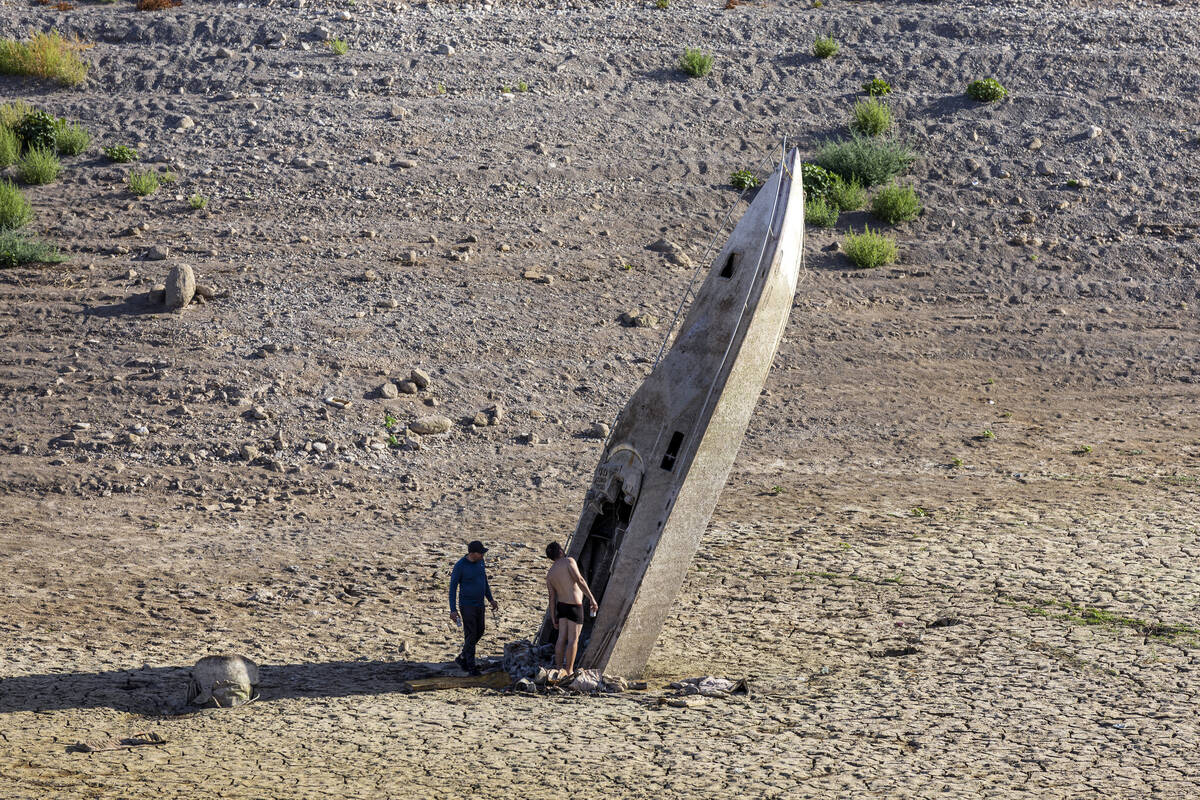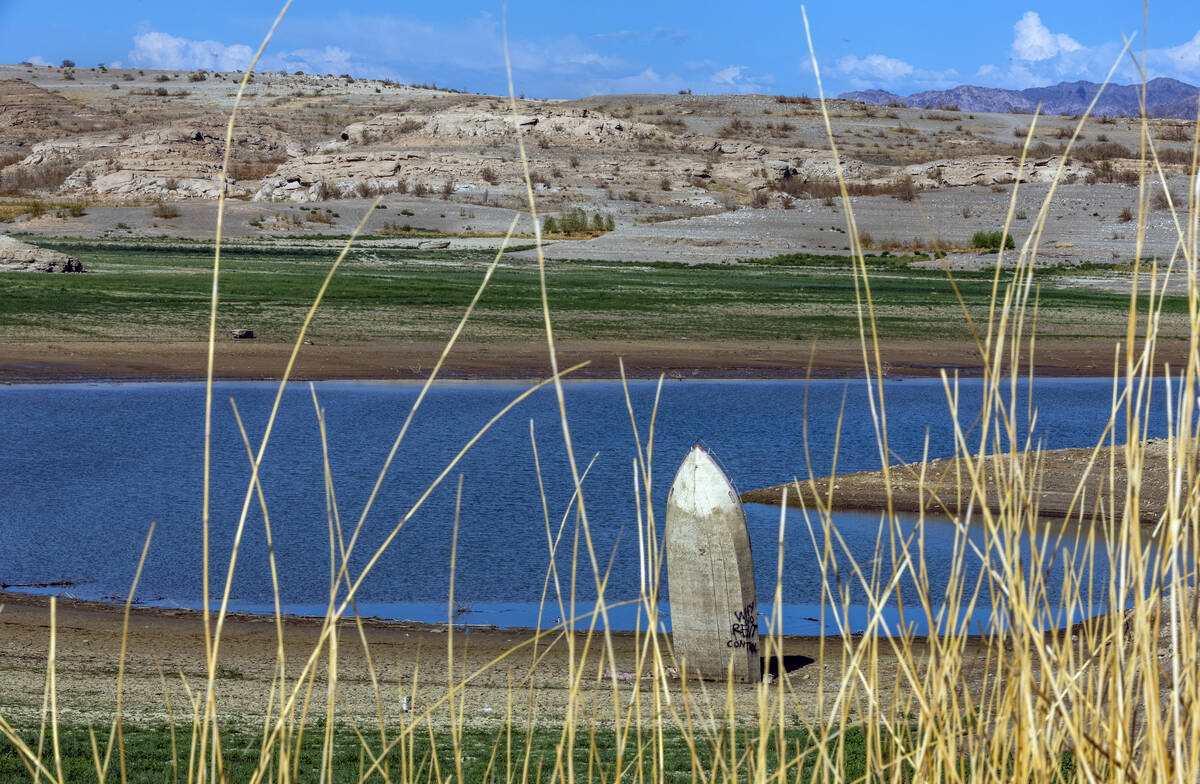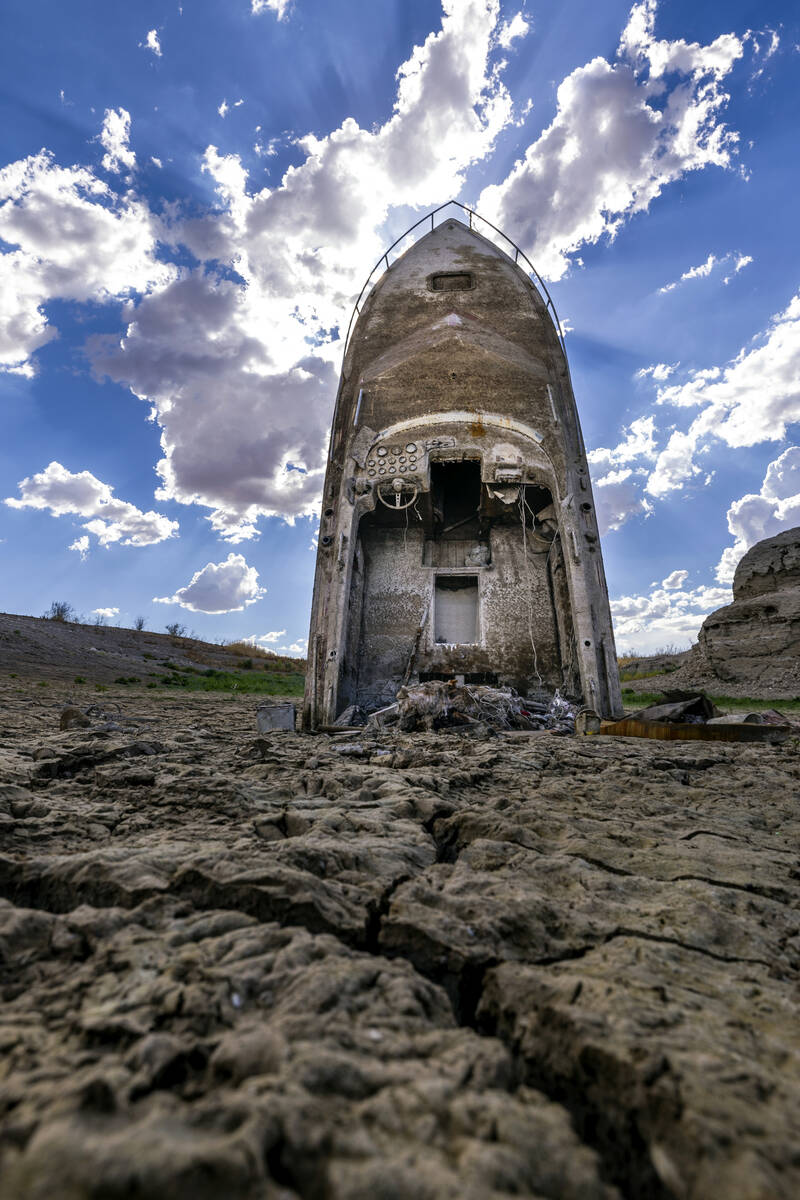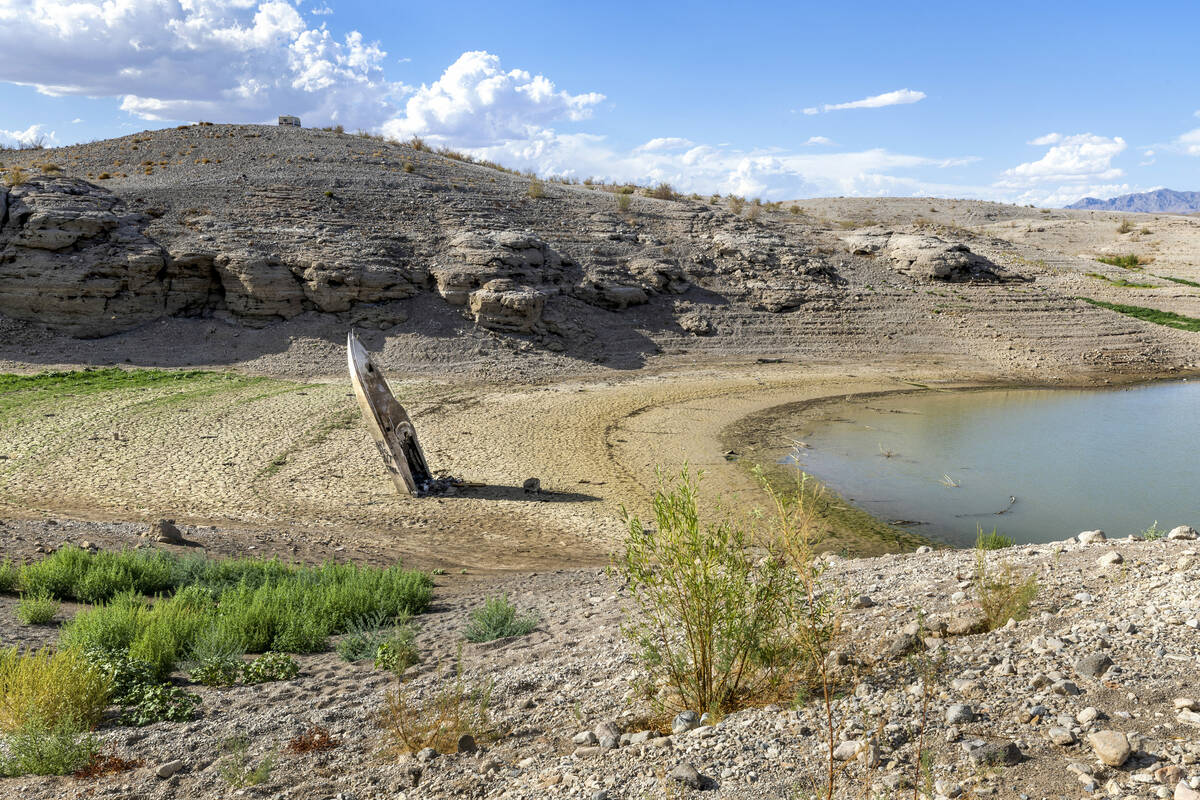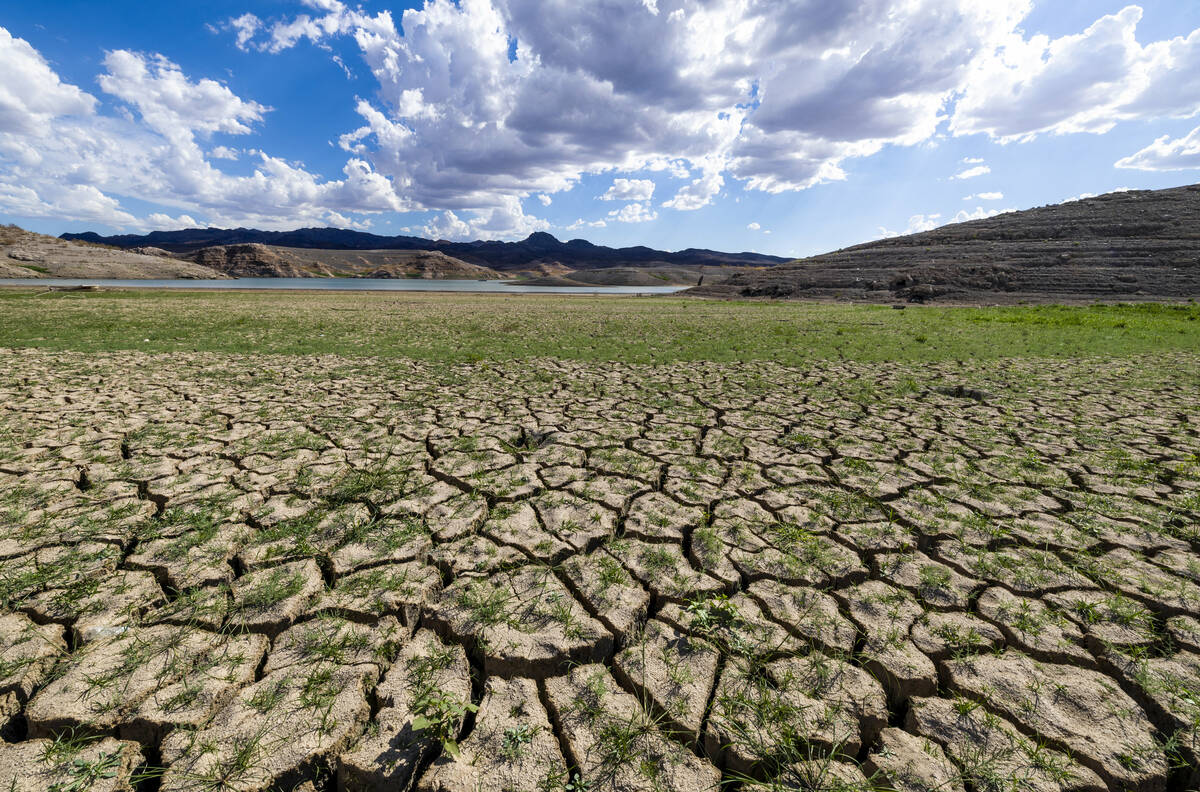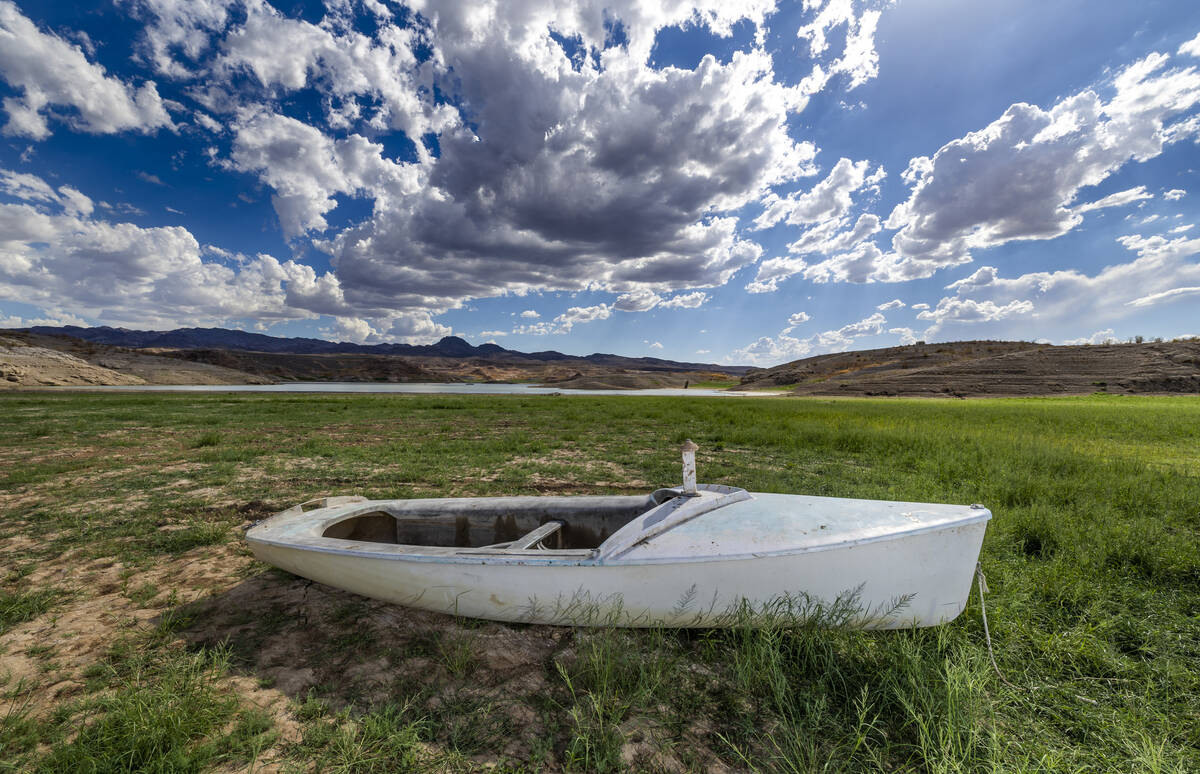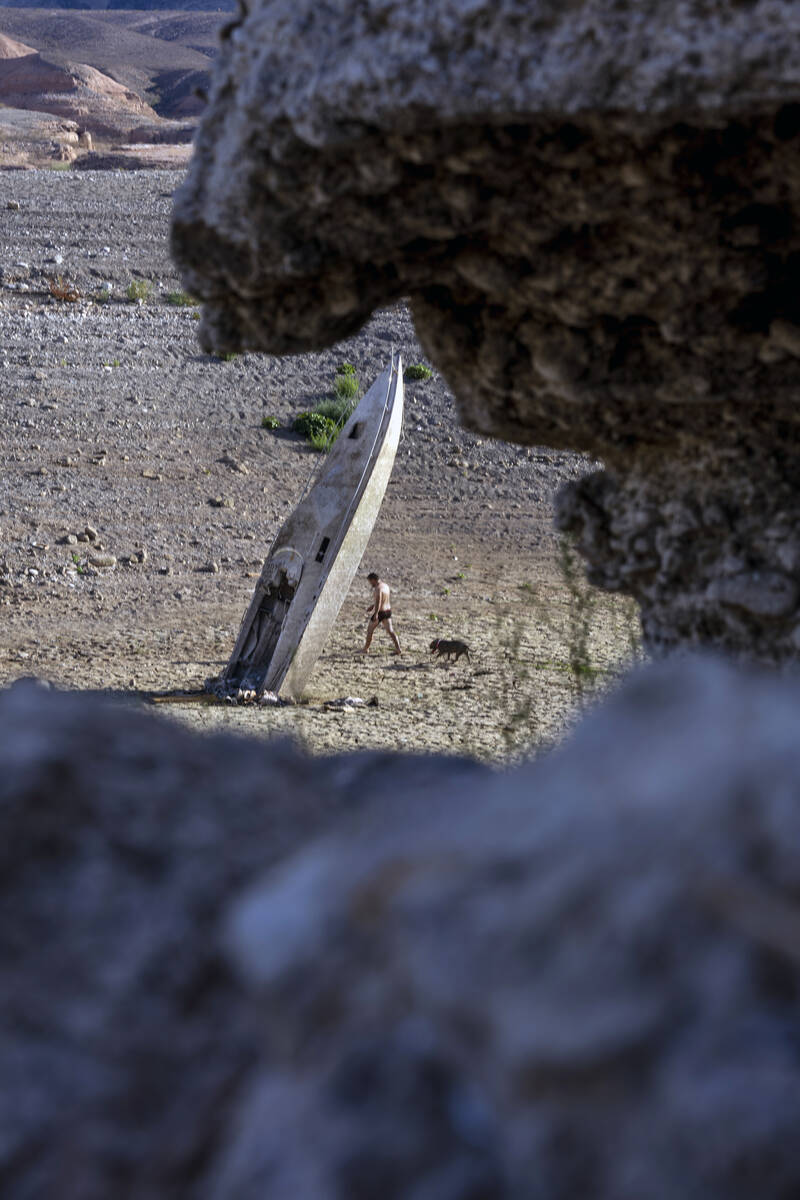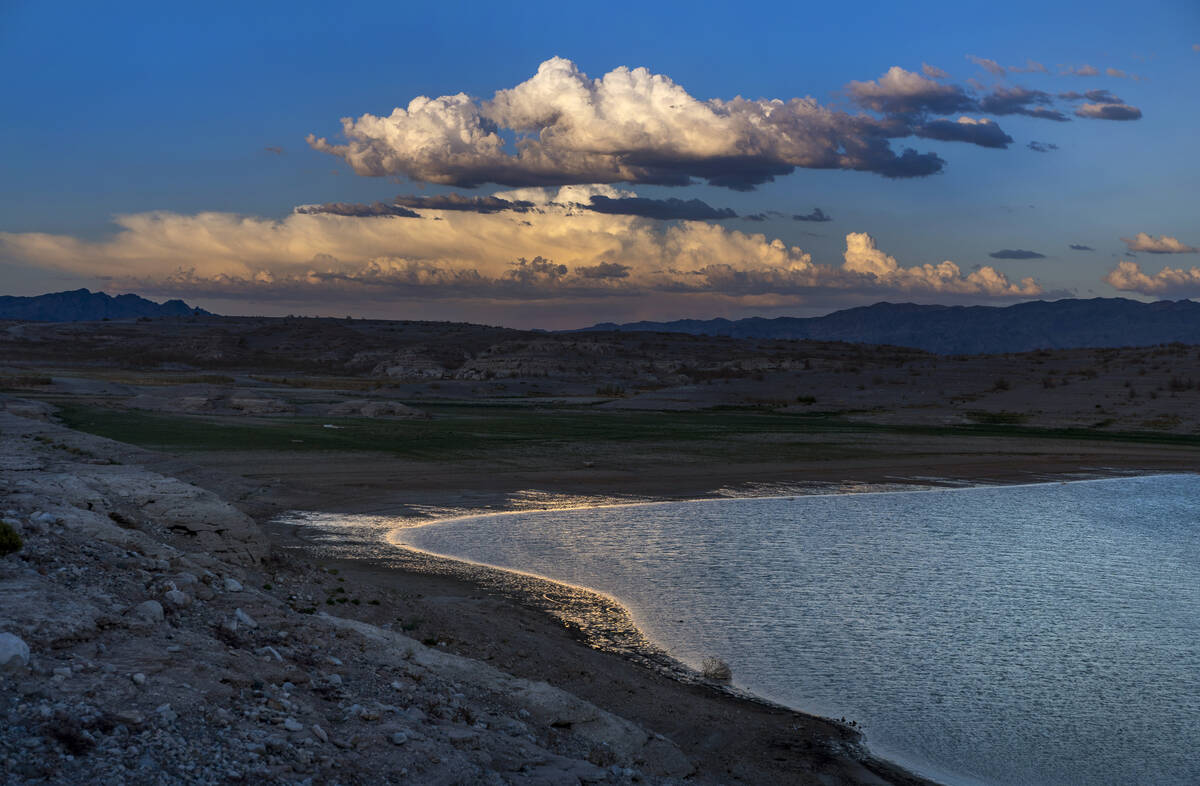Nevada conserves Lake Mead, but big cuts to the river still may come — PHOTOS
Federal officials’ call for massive cuts along the Colorado River has water managers in the American West scrambling to find common ground before the federal government comes down with its own proverbial hammer.
It’s a blow Southern Nevada is well positioned to absorb, thanks to a two-decade head start on conservation and significant investments in infrastructure to ensure water continues to flow in the Las Vegas Valley even in the worst of conditions.
“We’re far and away the best positioned,” said John Entsminger, general manager of the Southern Nevada Water Authority.
For more than 20 years the authority has pushed for conservation efforts to reduce the valley’s water consumption. And those efforts have paid off.
Nevada consumed 242,000 acre-feet of water in 2021, roughly about 80 percent of the 300,000 acre-feet of Colorado River water its entitled to annually under a series of agreements that stretch back 100 years. That’s more than 80,000 acre-feet, or about 27 million gallons, less than the Las Vegas Valley consumed in 2002 when there were 800,000 fewer residents.
Still, Lake Mead’s levels have continued to decline over the past two decades as a persistent drought has strained the Colorado River, a vital water supply for roughly 40 million people. As of Thursday, the water level at Lake Mead was at 1,043.7 feet above sea level. In early 2000, the lake level was over 1,200 feet.
In April, as levels continued to fall, the authority turned on pumps for a “third straw” and pumping station that allows it to draw water from near the bottom of Lake Mead, a project paid for by ratepayers that cost roughly $1.5 billion.
The U.S. Bureau of Reclamation said last week that climate-change-fueled shortages along the Colorado River basin will require additional cuts of 2 million to 4 million acre-feet next year to preserve critical levels at Lake Mead and Lake Powell.
Entsminger doesn’t foresee outright limitations on development or growth amid those cuts. But the reductions along the river that supplies about 90 percent of Southern Nevada’s water could move up the need for future conservation efforts and will put a larger magnifying glass on what kinds of companies and businesses Southern Nevada can target for economic development.
“We’ve entered an era where we need to be far more selective in how we invest our water,” he said.
Bureau of Reclamation Commissioner Camille Calimlim Touton said during a U.S. Senate hearing this month in Washington that it is imperative for the seven Colorado River basin states to come up with a plan for those additional cuts by mid-August and warned that the bureau has the authority to “act unilaterally to protect the system, and we will protect the system.”
To put the magnitude of those cuts into context, 4 million acre-feet — the upper range of the reductions mentioned by Touton — would exceed the total amount of water Arizona gets each year and nearly equal California’s annual entitlement of 4.4 million acre-feet.
“These are gruesome times. So nobody should doubt that these aren’t enormous cuts that are being called for,” said Jack Schmidt, director of the Center for Colorado River Studies at Utah State University.
Pulling off 4 million acre-feet in reductions, which equates to about 20 percent of the total annual consumptive use and losses along the entire Colorado River basin, “would be enormous,” he said.
Whether those cuts will be enough remains to be seen.
“Nobody knows what will happen next winter. Is there a non-zero probability that it could be worse? Yes,” Schmidt said. “Right now we’re in a very no-nonsense water crisis.”
How we got here
Last August, the federal government declared a water shortage for Lake Mead for the first time, triggering significant reductions in water allotments to Arizona, Nevada and Mexico.
Less than a year later, things have have rapidly worsened as the Southwest has become substantially hotter and drier over the last 20 years.
During the 1980s and 1990s, the West oscillated between several wet and dry periods. Those cycles of wet years were enough to recharge the Colorado system’s losses that happened during the dry years, according to Schmidt.
That started to change at the turn of the millennium.
Since the onset of a megadrought around the year 2000, “we have had strings of years that have been really, really dry,” Schmidt said. Even the years that have produced significant precipitation have not been nearly enough to rebuild those water reserves.
“Each time we have episodes of it being a little drier or little wetter since 2000, but it never rebuilds the bank account,” Schmidt said. “We just deplete really fast.”
Those trends became evident as far back as 2005, when the federal government started conversations with the Colorado River basin states to address the drought.
But the modeling used for those negotiations painted a far rosier picture than the reality seen on the river since the interim guidelines were in place in 2007 to protect the water that some 40 million rely upon amid the drought.
Those models showed a less than 10 percent chance that Lake Powell would drop below 3,550 feet of elevation anytime before 2060.
But Powell fell below 3,525 feet in March. That was followed by an announcement from the Bureau of Reclamation that it would hold back 480,000 acre-feet of water in the reservoir to maintain Glen Canyon Dam’s ability to produce hydropower for millions of homes and businesses in the region.
However, that plan also meant that 480,000 acre-feet of water that normally would flow downstream to Lake Mead would not be making that journey this year.
“I think it’s safe to say that the 2007 shortage guidelines have failed,” Schmidt said. “They didn’t achieve their purpose. They didn’t stem the tide of falling reservoir levels, so we keep putting Band-Aids on a failed agreement.”
And the outlook for the river is only getting worse, according to Michael Cohen, senior research associate at the Oakland, California-based water think tank the Pacific Institute.
The hotter, drier climate has also increased the demand for water from the agriculture sector, municipalities and even everyday residents. It also leads to increased evaporation across the system and snow melt that doesn’t make it back to the river before being absorbed into ever-drier and thirstier soil.
Cohen said that it’s not that people didn’t see the drought coming. It’s that not enough has been done to address the rate of climate change, the cause of the rising temperatures that are drying up the river’s water supplies. Water managers need to start pressing their representatives in Congress to focus on carbon emissions if they want to get things under control, he added.
“If we’re really going to solve this problem, I’m not sure we can be pumping more carbon into the atmosphere,” Cohen said.
What’s next
Schmidt, the Utah State researcher, said Southern Nevada has stood out among the Western water jurisdictions as an example of how jurisdictions can adapt when their backs are up against the wall.
Southern Nevada has implemented several programs to replace ornamental turf with desert landscaping, saving billions of gallons of water along the way. The authority recently banned thirsty evaporative cooling systems for new buildings and barred any new golf course from using Colorado River water for irrigation.
In 2020, the authority completed its low-level pumping station that will ensure that water can be pumped to Las Vegas even if Lake Mead drops another 150 feet to its “dead pool” level of 895 feet, the point at which Hoover Dam would be unable to release water downstream. That project wound up being needed just two years after being completed, as the lake levels dropped far enough this year to expose the reservoir’s first intake straw.
“Vegas is to be congratulated for the magnitude of effort to reduce consumptive use. People in Vegas ought to be very proud of what they’ve accomplished,” Schmidt said.
But those conservation successes amid the backdrop of a river that continues to shrink show that urban conservation measures won’t be enough to address the problems along the Colorado, Enstminger said.
Agriculture accounts for 80 percent of the Colorado River’s water allocation, and 80 percent of that is used for forage crops such as alfalfa, Entsminger told the Senate committee last week. As part of last year’s reduction agreements, some farmers in Arizona have left fields dry or unplanted or have turned to more groundwater pumping.
“It’s not that I don’t think the urban sector doesn’t need to do more. It’s just basic math,” Entsminger said.
States downstream of Hoover Dam — California and Arizona — as well as Mexico are likely to bear the major share of the cuts to protect the hydroelectric power and water infrastructure at the nation’s two largest reservoirs, Lake Mead and Lake Powell, Entsminger said.
That’s where the negotiations between the states over the next two months come into play.
Kyle Roerink, executive director of the Great Basin Water Network, wants the upper basin states like Wyoming, Utah and Colorado to also come to the table.
Roerink said California, with its more senior rights to the water along the river, “is the elephant in the room” moving forward and could make the implementation of any agreement or federally mandated cuts more complicated.
“I would be shocked if we get out of these next couple of years without major litigation on the river,” Roerink said.
Contact Colton Lochhead at clochhead@reviewjournal.com. Follow @ColtonLochhead on Twitter.



